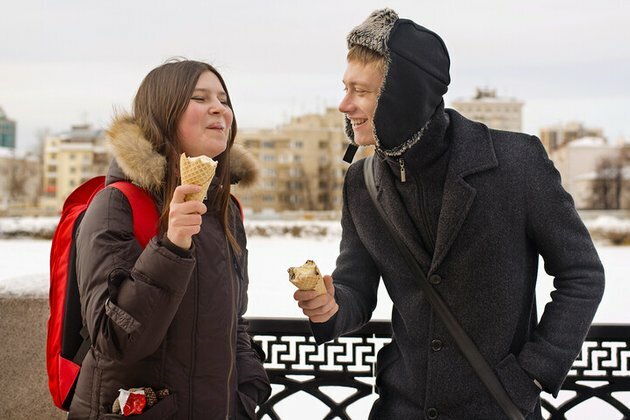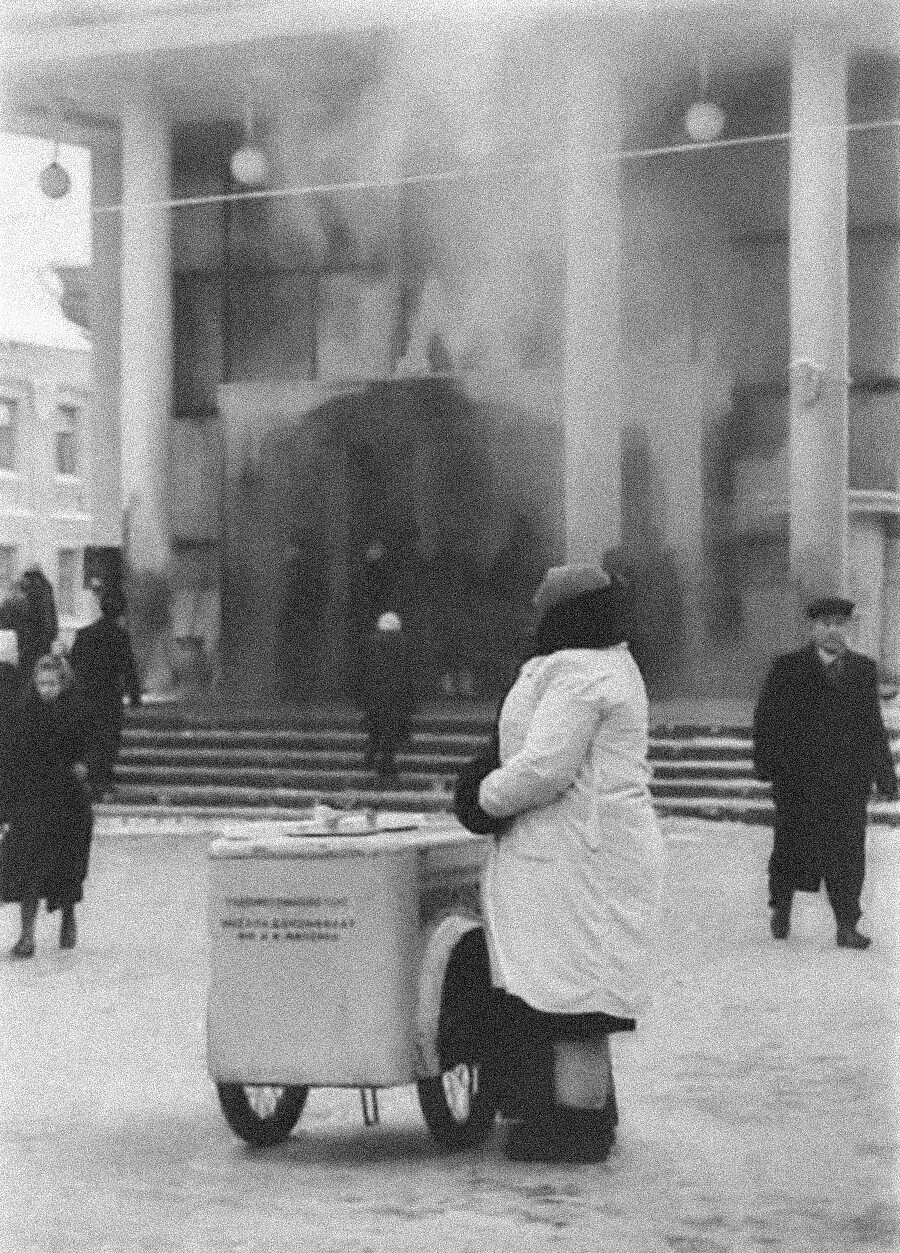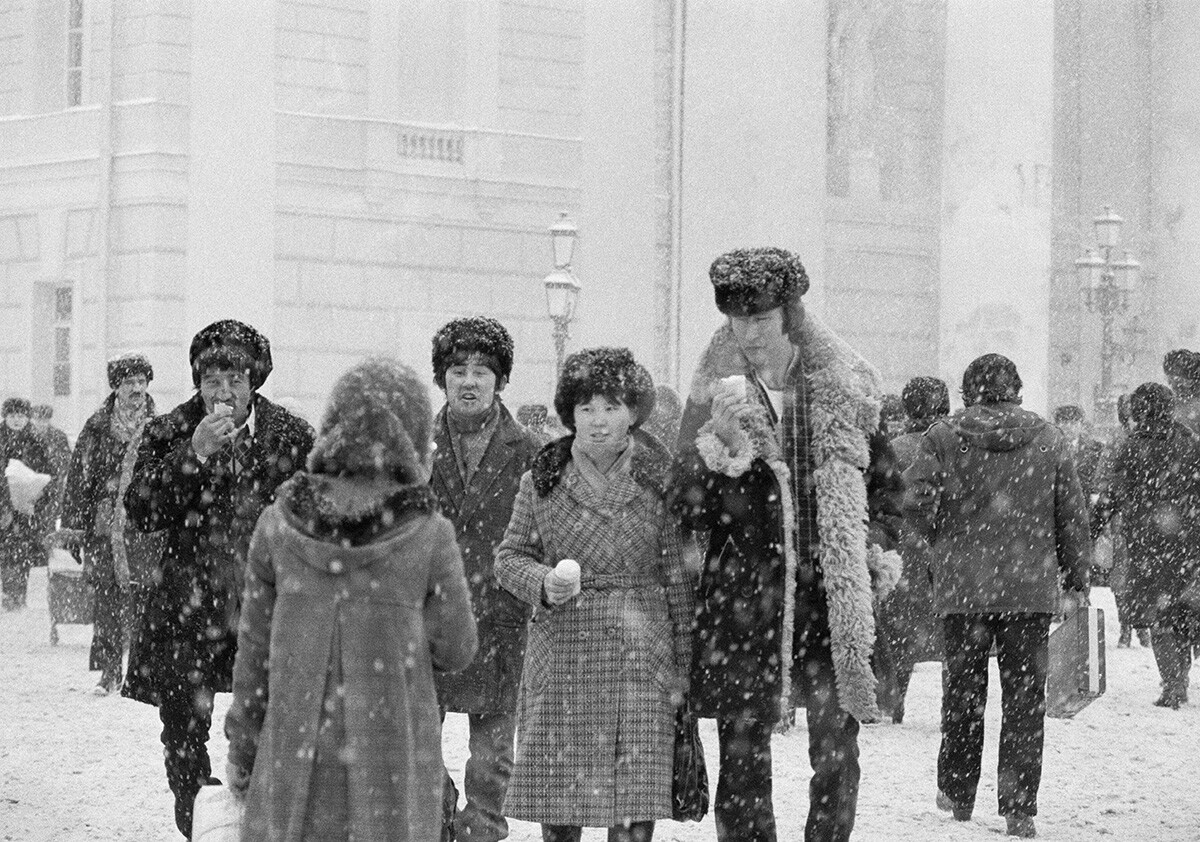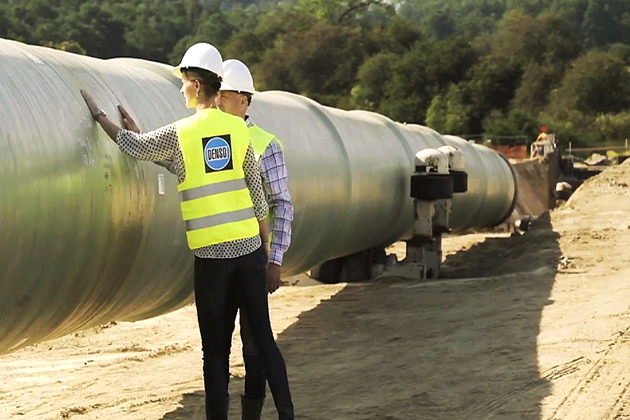Why do Russians eat ice cream in FREEZING weather
RBTH
07 Nov 2023, 19:25 GMT+10

It's minus 30 degrees Celsius outside and there is a line at a kiosk selling... ice cream! Such a scene surprises most, if not all, foreigners, but Russians find nothing unusual in it. What can explain this phenomenon?
In the Fall of 1944, British Prime Minister Winston Churchill came to Moscow. It was cold, as the winter had arrived early. When his motorcade passed through the city center, through the car window Churchill saw a man standing in the street quietly eating an ice cream.
The prime minister asked the diplomat accompanying him whether the man was indeed eating an ice cream in the frost and the latter shrugged his shoulders, as if to say: What's the big deal? And then, Churchill allegedly said: "The people who eat ice cream in such cold weather are invincible."

This photo was taken at minus 35C.
Nikolai Lavrentyev / MAMM / MDF
There is no documentary evidence of him saying these words, but Russians' all-season love of ice cream invariably provokes questions from foreigners.
Favorite dessert
True, ice cream is very popular in Russia. Its factory production began in the mid-1930s, when head of People's Commissar for the Food Industry Anastas Mikoyan brought refrigeration equipment to the young Soviet state from the U.S. (you can read more about his trip here). Ice cream had existed in Russia before, but it was made by hand and only in the warm part of the year. 'Plombir' (from the French word 'Plombières'), the recipe for which came from France at the beginning of the 19th century, was particularly popular.

Moscow in 1971.
Boris Kaufman/Sputnik
Mikoyan himself was a great fan of ice cream. The first factory in Moscow's Fili neighborhood managed to produce 30 tons of ice cream a day in 1938. And, by 1972, the figure had reached 125 tons!
It was sold all year round and kiosks selling exclusively ice cream appeared in the streets of Soviet towns and cities. The sellers wore a standard uniform and worked throughout the year.
The most widely sold varieties of ice cream were the 'Eskimo' brand [chocolate coated vanilla ice cream on a stick], ice cream served in wafer cones and 'Plombir' briquettes ('Plombir' was traditionally made with vanilla, eggs, cream and sugar). The average price was 0.20 rubles (for comparison, the fare on the Moscow Metro was 0.05 rubles, while a kilogram of 'Doktorskaya' sausage cost 2.30 rubles). In addition, ice cream was made according to state standards from natural ingredients and was always available.
Ice cream in winter - just like tea in summer
A total of 470,000 tons of ice cream is currently produced in Russia each year and every Russian, on average, eats 3.3 kg of it annually, which is equivalent to 40 ice cream cones! That might not seem like all that much in weight, but it is noteworthy that, in Russia, large portions are not commonly bought in one go, as is customary in the U.S. or Western European countries: Ice-cream in Russia is predominantly an impulse buy for pleasure.

'Walruses' in Novosibirsk.
Alexander Kryazhev/Sputnik
Ice cream in Russia continues to be sold not just in ordinary grocery stores, but also from street kiosks, which, for Russians, is difficult to walk past without buying something. And a purchase of this sort is understandable when it's hot, but why ice cream in winter?
As a matter of fact, it's all quite simple. Ice cream in winter is like hot tea in summer or, for that matter, a trip to the 'banya' - it's how people attain a temperature balance with their environment. When you eat ice cream, you don't feel as cold. Some people do it intuitively, while others deliberately set out to increase their endurance. Eating ice cream can be somewhat compared to ice-hole swimming.
Furthermore, ice cream, like other sweet foods, influences the production of endorphins, thus lowering stress levels and making us happier.
Naturally, it's best to eat it in the warm environment of home, otherwise the unwary person runs a serious risk of catching a chill.
Dear readers,
Our website and social media accounts are under threat of being restricted or banned, due to the current circumstances. So, to keep up with our latest content, simply do the following:
- Subscribe to our Telegram channel
- Subscribe to our weekly email newsletter
- Enable push notifications on our website
- Install a VPN service on your computer and/or phone to have access to our website, even if it is blocked in your country
 Share
Share
 Tweet
Tweet
 Share
Share
 Flip
Flip
 Email
Email
Watch latest videos
Subscribe and Follow
Get a daily dose of Irish Sun news through our daily email, its complimentary and keeps you fully up to date with world and business news as well.
News RELEASES
Publish news of your business, community or sports group, personnel appointments, major event and more by submitting a news release to Irish Sun.
More InformationInternational
SectionUS farmers face bankruptcy, economic uncertainty due to USDA freeze
CHICAGO/WASHINGTON, D.C.: Farmers and food groups across the U.S. are laying off workers, stopping investments, and struggling to get...
South Dakota law blocks eminent domain for carbon pipelines
SIOUX FALLS, South Dakota: A new South Dakota law banning the use of eminent domain for carbon capture pipelines has cast doubt on...
US intelligence agency orders DEIA officials to resign or face firing
WASHINGTON, D.C.: Officials working on diversity and inclusion programs at the U.S. Office of the Director of National Intelligence...
CDC study follows measles outbreak amid declining vaccination rates
WASHINGTON, D.C.: The U.S. Centers for Disease Control and Prevention (CDC) is planning an extensive study on possible links between...
US weather agency faces big layoffs under Trump’s civil service cuts
WASHINGTON, D.C.: The U.S. weather agency, NOAA, plans to lay off 1,029 workers following 1,300 job cuts earlier this year. This...
New Mexico reports first measles-related death in over 40 years
SANTA FE: New Mexico: A New Mexico resident who died recently tested positive for measles, marking the state's first measles-related...
Europe
SectionDublin unveils affordable housing plan for vacant Cabra site
DUBLIN, Ireland: Dublin City Council and Cluid Housing have unveiled plans to transform a vacant site in Cabra into an affordable rental...
Canada’s next PM Mark Carney to give up Ireland, UK citizenships
DUBLIN, Ireland: Mark Carney, Canada's incoming prime minister, has announced plans to renounce his Irish and British citizenships...
Ireland’s all-female crew begins Arctic trek for women’s heart health
DUBLIN, Ireland: An all-female crew is embarking on a challenging Arctic expedition to raise awareness and funds for women's heart...
Latest US pullback from international climate efforts
BRUSSELS, Belgium: The United States has withdrawn from the board of a U.N. climate fund designed to help poor countries deal with...
Ireland set to issue record deportation orders in 2025
DUBLIN, Ireland: The Department of Justice is on track to issue a record number of deportation orders in 2025, with over 700 orders...
Berlin abandons strict debt rules for major spending boost.
FRANKFURT, Germany: Germany is set to loosen its strict debt limits in a historic shift that could unlock over 1 trillion euros ($1.08...













